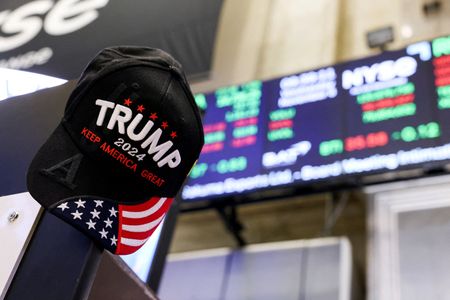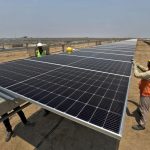
Investing.com — As Donald Trump reclaims the presidency, the economic implications of his second term, often referred to as “Trump 2.0,” spark vigorous debate.
In a Monday note, Yardeni Research highlights the many moving parts shaping this administration’s economic policies and their potential impact on the Roaring 2020s, an era of remarkable growth and resilience for the US economy and stock market.
The backdrop for this analysis is extraordinary. Despite major challenges, including a pandemic, geopolitical crises, and aggressive Federal Reserve rate hikes, US real GDP and the S&P 500 have both reached record highs.
Federal spending, which remains heavily stimulative, has been a significant driver. Since 2022, government outlays on healthcare, Medicare, and Social Security rose by $623 billion to a record $3.3 trillion.
“There was a big drop in government spending on income security by $806 billion to $0.7 trillion, but that was almost completely offset by a $139 billion increase in defense spending to a record $0.9 trillion and, even more significantly, by a $510 billion increase in net interest outlays to a record $0.9 trillion,” Yardeni explains.
Under Trump 2.0, fiscal policy could remain expansionary or turn restrictive. Tax reforms, a hallmark of Trump’s first term, are set to deepen. The corporate tax rate may drop further to 15%, with additional cuts to individual taxes on tips, overtime, and Social Security.
While these measures could widen the federal deficit, Trump’s administration aims to counterbalance them through deregulation and higher tariffs, potentially raising $400 billion to $800 billion in revenues.
“That’s assuming that these higher tariffs don’t reduce imports significantly or start a global trade war,” Yardeni emphasizes.
Deregulation is another key element. Reducing the federal government’s size may shrink payroll employment but could lower operational costs for businesses. However, contentious policies like deportation may reduce the labor force, creating inflationary pressures unless offset by productivity gains.
Energy policies aimed at boosting oil and gas production could keep energy prices in check.
The administration also faces risks, particularly from “Bond Vigilantes.” If fiscal policies appear unsustainable, bond yields could surge, undermining economic momentum.
Federal Reserve Chair Jerome Powell has warned that fiscal policies must address the unsustainable path of federal debt, a challenge that Trump’s team will need to navigate carefully.
Despite these complexities, Yardeni Research remains cautiously optimistic. They project that Trump 2.0 might boost productivity, sustain economic growth, and keep inflation in check. The administration’s success in balancing fiscal discipline with growth-oriented policies will be key.
“Our base case for the remainder of the decade, with Trump 2.0 running Washington over the next four years, remains the Roaring 2020s,” the market research firm said.
While the road ahead is fraught with “known unknowns,” the US economy has repeatedly shown resilience, thriving even amid Washington’s meddling. Whether Trump 2.0 bolsters or disrupts this momentum remains to be seen.






